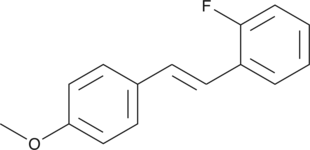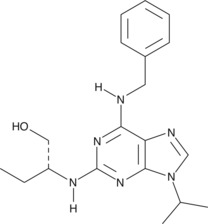Description
A sesquiterpene with diverse biological activities; a noncompetitive antagonist of nAChRs; inhibits VEGF- and bFGF-induced proliferation in HUVECs at 50-100 µM; inhibits proliferation of HeLa, SGC-7901, and BEL-7402 cells at 10-100 µM; reduces tumor growth in H22 and S-180 mouse tumor models at 2.5-5 mg/kg; an agonist of TRPA1, TRPV3, and TRPM8; increases food intake and plasma levels of ghrelin in rats
Formal name: (2R,4aR,8aS)-decahydro-α,α,4a-trimethyl-8-methylene-2-naphthalenemethanol
Synonyms: (+)-β-Eudesmol
Molecular weight: 222.4
CAS: 473-15-4
Purity: ≥95%
Formulation: A solid
Product Type|Biochemicals|Ion Channel Modulation|Activators||Product Type|Biochemicals|Ion Channel Modulation|Blockers||Product Type|Biochemicals|Natural Products|Terpenes||Research Area|Cancer||Research Area|Endocrinology & Metabolism|Metabolic Diseases||Research Area|Neuroscience|Behavioral Neuroscience|Food Intake




